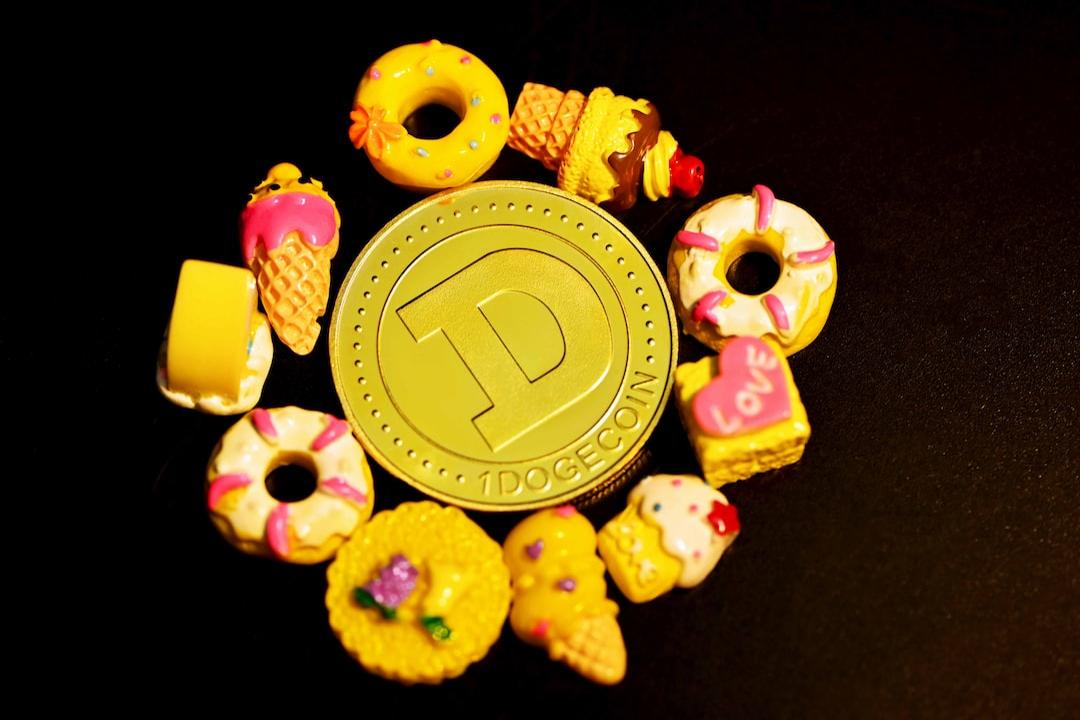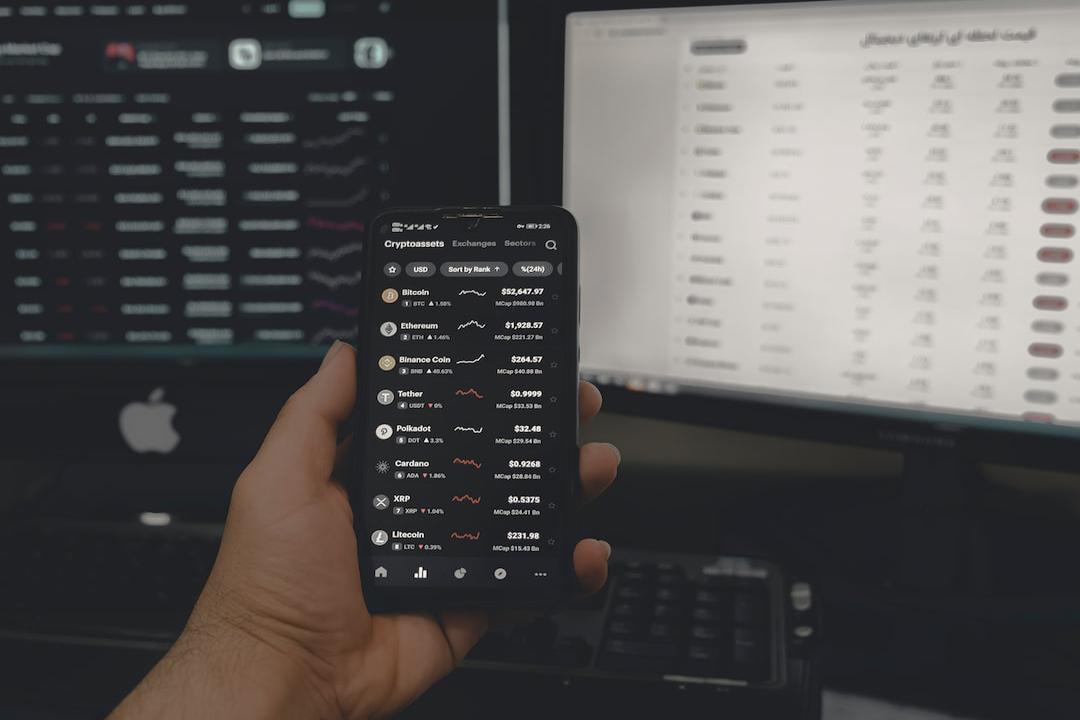The Secret Sauce of Hyperliquid
Author: @stacy_muur, CuratedCrypt0 Member
Translation: zhouzhou, BlockBeats
Editor’s Note: This article was published in February 2025, when Hyperliquid was under the spotlight for the frequent contract operations by the “50x leveraged insider whales.” Three months later, as the cryptocurrency market warmed up, Hyperliquid sparked another market stir, with its token $HYPE hitting a new all-time high. This time, the whale grabbing attention was James Wynn, a prominent “40x leveraged whale.” On May 26, James Wynn posted on social media, hinting that he would no longer participate in (or publicly conduct) contract trading. He stated:
BlockBeats previously reported that whale James Wynn attracted significant attention on Hyperliquid after opening long and short positions worth over $1 billion. Wynn opened a large short position on Saturday to bet on Bitcoin’s decline, and the position exceeded $1 billion in value. Earlier today, Trump reversed his decision, postponing the 50% tariff on the European Union, leading to a rapid Bitcoin rebound, which caused his short position to be liquidated at a loss of over $15 million.
Why are whales so keen on Hyperliquid? This decentralized derivatives platform, offering up to 50x leverage, zero Gas fees, and an entirely on-chain transparent order book, has become a haven for high-risk traders. The platform’s low costs, high leverage, and market volatility have made it a magnet for whales, making Hyperliquid the new focal point for contract trading.

Original Content (with slight adjustments for readability):
In the history of decentralized finance (DeFi) derivatives, few protocols have dominated more than half of the on-chain perpetual contract market, but Hyperliquid has done so. What is its secret?
Data shows that in the past 24 hours, the total trading volume of on-chain perpetual contracts reached $14.37 billion, with @HyperliquidX accounting for a staggering $9.3 billion, or 64.71%, demonstrating Hyperliquid’s absolute dominance in the market.

However, most decentralized exchanges (DEXs) have struggled in these aspects, typically relying on:
- Automated Market Maker (AMM) designs (leading to high slippage on large orders, e.g., GMX);
- Some off-chain solutions (like dYdX v3), which affect transparency or increase user complexity.
Hyperliquid recognized this problem: if user experience is poor or liquidity is insufficient, users won’t migrate to on-chain solutions on a large scale. Therefore, the team has committed to providing “CEX-level speed and liquidity, but fully on-chain.” Hyperliquid’s success demonstrates the potential of DEXs in the face of giants like Binance. Binance’s 24-hour perpetual contract trading volume is $97.22 billion, while the overall DEX trading volume is only $14.637 billion, with Hyperliquid contributing $9.532 billion.
Thanks to Hyperliquid, DEX’s trading volume reaches 15% of Binance’s, while without it, this ratio would drop to 5%, leaving only $5.105 billion. This proves Hyperliquid’s pivotal role in advancing DeFi trading.
This performance realizes Hyperliquid’s core promise—offering CeFi-level trading experiences on a fully decentralized Layer-1 platform.
Table of Contents
- Background and Founding Story
- Why CEXs Still Dominate?
- Product Building with a Focus on User Experience from Day One
- 1. Perpetual Contract DEX
- 2. Spot Exchange
- 3. Hyperliquid HLP (Liquidity Vault)
- 4. Vaults (Copy Trading)
- 5. HIP-1 and HIP-2 Token Standards
- Hyperliquid’s Technical Core
- HyperBFT Key Optimizations
- HyperEVM: Full Layer-1 Capabilities
- Hyperliquid vs. Other DEXs
- Comparing with CEXs
- Hyperliquid’s Community: A Trading Platform Built for Traders
- Community-First Token Distribution
- Listening to Users
- Assistance Fund
- What This Means for End Users
- User-Centric Product Design
- Decentralized Path
- What is Hyperliquid’s Success Secret?
Background and Founding Story
Hyperliquid was founded by @chameleon_jeff (Harvard graduate, former Hudson River Trading quantitative trader) and a small engineering team from top schools like MIT and Caltech. Between 2020 and 2022, they were engaged in high-frequency trading (HFT) and turned to decentralized solutions after the collapse of FTX. Witnessing billions of dollars evaporate due to centralized custody, their goal became clear: to build a self-custodial alternative without compromising performance, and choose the “no VC, self-funded” route to ensure alignment of long-term interests with users and traders, not short-term investors.
Despite the collapse of major centralized exchanges (CEXs) like FTX, user trading habits did not immediately shift to DeFi. Many traders still use centralized platforms like Binance, not because they ignore custodial risks, but because CEXs offer:
- Fast and familiar interfaces
- Deep liquidity
- Advanced trading features (stop-loss orders, professional candlestick charts, etc.)
- No Gas fees, cross-chain seamlessness
- Low barriers to entry, convenient trading experience

The image above shows data from November to December 2022 following the FTX collapse (estimated as of March 6, 2025). Hyperliquid recognized this shortcoming: if user experience is poor or liquidity insufficient, users will not migrate in large numbers to on-chain solutions. Therefore, the team has committed to creating “CEX-level speed and liquidity, but fully on-chain.”
Hyperliquid’s Product Matrix
Hyperliquid’s core product is its perpetual contract DEX, utilizing a fully on-chain Central Limit Order Book (CLOB), supporting:
- BTC, ETH up to 50x leverage
- SOL, SUI, kPEPE, XRP up to 20x leverage
- Small-cap tokens up to 3x leverage
Hyperliquid started from scratch, providing more openness than competitors’ off-chain solutions and specifically designed for high-frequency trading (HFT) needs. Its features include:
- Sub-second trade confirmation
- 100,000 orders processed per second
- No Gas fees or near-zero Gas fee experience for placing and canceling orders
These key factors make its user experience comparable to CEXs.
Advanced Trading Mechanisms
- Atomic operations: Atomized liquidation supported by the latest oracle prices, with atomic funding rates distributed hourly
- Asset security checks: The platform verifies asset security at the end of every block
- Order prioritization: Prioritizes cancel orders and limit orders, protecting market makers from malicious liquidity effects
As of last week, Hyperliquid Perps’ trading volume reached $66.5 billion, nearly seven times that of the second-ranked Jupiter ($9.7 billion), surpassing the combined total of the next 14 competitors ($33.6 billion).
Hyperliquid dominates 66% of the total trading volume of the top 15 perpetual exchanges.

Hyperliquid’s Spot Exchange
Hyperliquid’s spot exchange launched in mid-2024, initially supporting over 20 native assets like HYPE and memecoin.
Compared to Hyperliquid’s massive $1.06 trillion perpetual contract market, the spot exchange started smaller but grew rapidly. By early 2025, following key updates (especially BTC’s launch), Hyperliquid is gradually becoming a strong competitor in on-chain spot trading.

What’s Next?
Stay tuned for more updates as Hyperliquid continues to develop.
Products Built on Its Customized Blockchain – Hyperliquid Layer1
On February 18, 2025, HyperEVM officially launched its mainnet.

Hyperliquid’s Blockchain Can Handle Over 20,000 Transactions per Second (TPS)
Hyperliquid’s blockchain currently processes over 20,000 transactions per second (TPS), supporting a powerful ecosystem including perpetual contract trading and the BTC spot market. Based on the HyperBFT consensus, its L1 has evolved from a professional trading platform into a general-purpose blockchain.

Significant Increase in TPS
Previously limited by Tendermint, which supported only 20,000 orders per second, the upgrade now allows processing of 200,000 orders per second.
Faster Processing Speed
The consensus process is not hindered by execution blocks, allowing transactions to be continuously ordered without waiting for the current block execution to complete.
Lower Latency
Confirmation times are faster and more stable, only affected by network delays.
Optimistic Responses
Block generation speed depends on the communication efficiency of validators.
HyperEVM Integrates the General EVM Network into the Hyperliquid Blockchain
This forms a dual-VM architecture:
- Native VM: Optimized for high-performance trading.
- EVM Layer: Supports permissionless third-party development.
The upgrade of HyperBFT, along with the introduction of BTC spot trading, has gradually transformed Hyperliquid into a more powerful and versatile trading platform.
Fully On-Chain vs. Partially Off-Chain
Hyperliquid adopts a fully on-chain Central Limit Order Book (CLOB), whereas many DEX competitors (such as dYdX v4) still rely on partially off-chain order books. Hyperliquid’s solution ensures verifiability and a transparent matching engine, avoiding issues like front-running and hidden operations.
Dominance in the Perpetual Contract Market
As of February 2024, Hyperliquid holds 56% of the on-chain derivative DEX trading volume. Since July 2024, its monthly perpetual contract trading volume has surpassed major competitors. In January 2025, Hyperliquid’s monthly perpetual trading volume reached $196 billion, while the combined total of the other four major protocols was only $60 billion.

Performance and Market Maker Priorities
Hyperliquid’s custom Layer-1 and consensus mechanism (HyperBFT) enable it to handle sub-second latency and approximately 100,000 transactions per second, designed specifically for high-frequency trading. Other DEXs based on general-purpose blockchains need to share block space with many other transactions, making it more difficult to maintain high throughput.
Transaction Volume Gap and Growth Trajectory
Although Hyperliquid is still smaller than top centralized exchanges like Binance, it has narrowed the gap in certain months. By March 2025, its trading volume accounted for over 26% of the total trading volume of the displayed top 100 Binance spot pairs. This comparison highlights how an efficient on-chain perpetual contract exchange can effectively challenge or even dominate centralized spot markets.

On-Chain Transparency vs. Centralized Control
CEXs often have proprietary off-chain engines, which can lead to opacity in order routing, fees, or front-running. Hyperliquid’s fully on-chain design allows anyone to instantly verify transactions.
Future Goal — “On-Chain Binance”
Analysts describe Hyperliquid’s bullish outlook as developing into an on-chain Binance analogy. It already offers perpetual contracts and an expanding spot market, recently launching spot BTC, and with HyperEVM now live on the mainnet, it is starting to attract a wider range of DeFi applications.
After becoming a leader in DeFi derivatives, Hyperliquid’s rapid success relies not only on its performance but also on its community-first philosophy.
Risk-Free Investment Ownership
Hyperliquid’s team has developed the platform through self-financing, avoiding the distribution of tokens to private investors. This ensures that tokens are not diluted by large venture capital stakes, contrasting sharply with competitors like dYdX (over 50% allocated to investors) or GMX (30% allocated to insiders).
Generous Airdrop
Genesis Airdrop (31% of supply): Distributed to 94,000 early users, with each receiving an average of approximately $45,000. This rewards true users, not speculators.
Points Program
The opaque reward mechanism suppresses Sybil attacks, favoring loyal users over bots.
76% Community Allocation
Over three-quarters of $HYPE tokens are allocated to the community (airdrops + incentives), ensuring alignment with long-term growth.
Direct Feedback Builds a Community with Common Interests
The team directly contacted traders such as @HsakaTrades (500k+ followers) and @burstingbagel, building Vaults (e.g., Delta-neutral strategies with 20%+ annual yield) and HLP based on feedback. Since 2024, over 50% of feature updates have come from user requests, making traders co-creators, not just users.
Building Trust Through Reliability
A reliable product retains users in a skeptical market. Traders initially joined for the airdrop but stayed because Hyperliquid offers 1-second deposit speeds, deep liquidity in HLP, and 99.9% uptime, unlike competitors that frequently experience downtime.
Hyperliquid is not the first DEX to launch perpetual contracts, but by optimizing trading speed (sub-second order execution), liquidity (HLP pools exceeding $540 million), and user experience (solving withdrawal delays ignored by competitors), it has achieved 100,000 daily transactions, successfully dispelling doubts that “dYdX or GMX has already ‘ended’ the derivatives market.”
For Traders Using Hyperliquid
Traders pay transaction fees, a portion of which is allocated to the Assistance Fund (AF). This fund continuously buys HYPE tokens from the market, creating ongoing buying pressure. As trading volume increases, more fees flow into AF, further driving demand for HYPE. As of now, AF has accumulated 16.63 million HYPE tokens, accounting for 4.97% of the circulating supply, valued at approximately $267.24 million. Hyperliquid’s rapid growth is evident, with January 2025’s perpetual trading volume alone reaching $196 billion.

For HYPE Holders and Traders
This system creates a self-reinforcing value cycle. As Hyperliquid’s trading activity grows, the purchasing power of the Assistance Fund also grows, benefiting long-term token holders.
Self-Reinforcing Cycle
More transactions → More fees → More repurchases → Token value increases.
Gas-Free Trading
Gas fees only apply when trading volume increases due to activities such as spot listing or transferring to a new wallet.
No KYC Required
Users can register via email or a crypto wallet (e.g., MetaMask).
Intuitive Interface
Designed for both beginners and advanced traders, with an interface similar to centralized exchanges (e.g., Binance).
Near-Instant Settlements
Sub-second block times support near-instant trading.
High Throughput
Processing over 200,000 transactions per second, with no delays even during peak activity.
Easy Fund Deposits
Deposit USDC via Arbitrum (future plans to support native multi-chain).
Gamified Design
Leaderboards and competitive rewards (e.g., airdrops to top traders) create a highly engaged and active community.
Future Development
While Hyperliquid’s L1 is initially operated by team-run validators (optimized for performance and rapid iteration), it is gradually transitioning toward a multi-validator network and decentralized node framework:
- Expanding the validator set (from 16 to over 100 nodes).
- Read-only nodes: Third parties can verify the chain’s state and block production using existing nodes.
Long-Term Deployment Plan
As the ecosystem grows, the team plans to introduce stronger staking and validator onboarding mechanisms, aiming for a trustless model similar to leading proof-of-stake networks.
Team Incentive Alignment
As fees currently flow into the protocol treasury and LP providers (not the founding team), the team’s future rewards are tied to the upcoming token launch, aligning with long-term chain performance and decentralization goals.
Looking Ahead
Hyperliquid is evolving from a focused perpetual contract DEX into a full exchange ecosystem. With the addition of BTC spot trading, HyperEVM’s mainnet launch, and the expansion of the validator set, its ambition is clear — to become the “on-chain Binance.” Combining the performance of CeFi with the transparency of DeFi, it already accounts for 64.71% of on-chain perpetual contract trading volume, proving how a successful community-driven approach can drive a DEX to challenge even the largest centralized platforms.
Key Highlights:
- No VC, self-funded model: Ensures user token ownership, reduces private sale pressure, prioritizes real trader interests over short-term investors.
- User-focused token distribution: Generous airdrop (31% of supply to early users, 76% to the community), dynamic points program to prevent Sybil attacks, and an assistance fund benefiting holders through token repurchases.
- Efficient Layer-1 (HyperBFT + HyperEVM): Sub-second confirmations, 100k+ order throughput, and EVM compatibility, offering speed and future DeFi scalability.
- Fully on-chain CLOB: Transparent order matching and minimal slippage, bridging the liquidity gap usually found in CeFi.
- Spot and perpetual contract one-stop service: Seamless access to core markets, new BTC spot listings, and strong perpetual products. Users can manage spot and leveraged positions on a single platform.
- Community-driven feature development: Direct feedback loop (users request Vault, HLP improvements, and cross-chain bridging) lets traders participate in and shape ongoing improvements.
- Long-term decentralization vision: Gradual expansion of the validator set, read-only nodes, fee structure without team profits, ensuring incentive alignment and gradual trustlessness.
Through a combination of technological excellence, community-first incentives, and uncompromising user experience, Hyperliquid has outlined the blueprint for DeFi success. Its “secret” is essentially a perfect blend of institutional-grade performance and grassroots user engagement, redefining on-chain trading and paving the way for a broader future of decentralized finance.
Original article link: This article is authorized for reprint from Lido BlockBeats.
Related Reports:
- “Hyperliquid’s Phoenix Rebirth: Protocol’s Daily Revenue Surpasses $5 Million, HYPE Surges Above $30”
- “Hyperliquid’s Liquidity Pools Face Liquidation Crisis Again! Binance and OKX Join the Attack, Team Forced to ‘Play Hard’”

